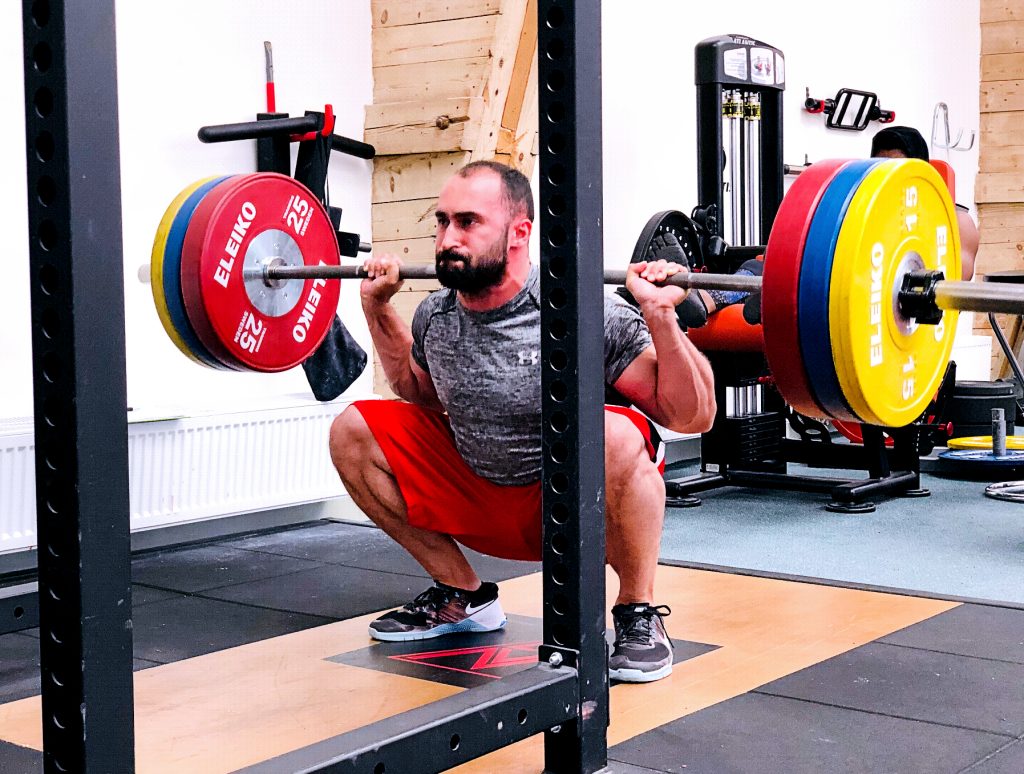The Russian Squat System
Soviets were well known for producing impressive results on Weightlifting, and their performance at the Olympic games was absolutely outstanding. They were also well known for their devotion to strength training research with a large number of publications on different subjects, including the implementation of their training programs.
From there, I extracted a high frequency training program to improve the performance on the squats – for some people can be considered a squat specialization program – where the athlete should perform this exercise 3 times per week, variating mainly the intensity of every session. As you might guess, the volume in every session is relatively low, and the frequency takes care of the expected gains.
Legends of strength like John Davis and Doug Hepburn reported doing multiple training sessions per week for the same muscle group – also known as high frequency training – and research has shown that higher frequencies are directly correlated with higher rates of strength improvements.
The program suggested by V. Maslaev, looks as follows:
Week 1
Training Session 1:
4 sets of 5 reps @75% of your 1RM
Training Session 2:
5 sets of 5 reps @85% of your 1RM
Training Session 3:
4 sets of 3 reps @60% of your 1RM
Week 2
Training Session 1:
3 sets of 5 reps @80% of your 1RM
Training Session 2:
6 sets of 5 reps @85% of your 1RM
Training Session 3:
4 sets of 3 reps @60% of your 1RM
Week 3
Training Session 1:
4 sets of 3 reps @75% of your 1RM
Training Session 2:
3 sets of 3 reps @85% of your 1RM
Training Session 3:
4 sets of 3 reps @60% of your 1RM
As you can see, the volume of the third week is lower, and it is considered the unloading part of this training program.
A few notes about the application of this system:
- Being a squat specialization program, you can choose to do it with front or back squats, depending on which exercise you need to improve the most.
- Use a slight variation of the squat in every workout, so if on day 1 you did Backs Squats with heels elevated and narrow stance, on day 2 you could do Back Squats with heels Flat and mid stance, and on day 3 you could do Back Squats heels flat and wide stance. The variations chosen will depend on your specific needs and patterns needed to be improved.
- You could also pair the squats with an antagonist movement, like a knee flexion exercise, but that will depend or your particular needs. If you decide to add the antagonist, you could use the same loading parameters, including the variations of the exercises for the different training sessions, and the rest between sets will be 2 minutes between agonist and antagonist. If you decide NOT to add the antagonist, the rest between sets should be 4 minutes.
- I strongly suggest not to add any other knee extension exercise, as it might lead to overtraining and possible injuries.
One example of the way I’ve had implemented this program with great success in the development of strength is as follows:
Week 1
Training Session 1:
A1. Back Squats Heels Elevated Narrow Stance, 4×5, 3-0-X-0, @ 75%, rest 2 minutes
A2. Leg Curl Kneeling Foot Neutral Poliquin, 4×5, 4-0-X-0, @ 75%, rest 2 minutes
Training Session 2:
A1. Back Squats Heels Flat Mid Stance, 5×5 @ 85%, 3-0-X-0, rest 2 minutes
A2. Leg Curl Prone Feet Outward Dorsiflexed, 5×5 @ 85%, 4-0-X-0, rest 2 minutes
Training Session 3:
A1. Back Squats Heels Flat Wide Stance, 4×3 @ 60%, 3-0-X-0, rest 2 minutes
A2. Leg Standing Foot Inward Plantarflexed, 4×3 @ 60%, 4-0-X-0, rest 2 minutes
Week 2
Training Session 1:
A1. Back Squats Heels Elevated Narrow Stance, 3×5 @ 80%, 3-0-X-0, rest 2 minutes
A2. Leg Curl Kneeling Foot Neutral Poliquin, 3×5 @ 80%, 4-0-X-0, rest 2 minutes
Training Session 2:
A1. Back Squats Heels Flat Mid Stance, 6×5 @ 85%, 3-0-X-0, rest 2 minutes
A2. Leg Curl Prone Feet Outward Dorsiflexed, 6×5 @ 85%, 4-0-X-0, rest 2 minutes
Training Session 3:
A1. Back Squats Heels Flat Wide Stance, 4×3 @ 60%, 3-0-X-0, rest 2 minutes
A2. Leg Standing Foot Inward Plantarflexed, 4×3 @ 60%, 4-0-X-0, rest 2 minutes
Week 3
Training Session 1:
A1. Back Squats Heels Elevated Narrow Stance, 4×3 @ 75%, 3-0-X-0, rest 2 minutes
A2. Leg Curl Kneeling Foot Neutral Poliquin, 4×3 @ 75%, 4-0-X-0, rest 2 minutes
Training Session 2:
A1. Back Squats Heels Flat Mid Stance, 3×3 @ 85%, 3-0-X-0, rest 2 minutes
A2. Leg Curl Prone Feet Outward Dorsiflexed, 3×3 @ 85%, 4-0-X-0, rest 2 minutes
Training Session 3:
A1. Back Squats Heels Flat Wide Stance, 4×3 @ 60%, 3-0-X-0, rest 2 minutes
A2. Leg Standing Foot Inward Plantarflexed, 4×3 @ 60%, 4-0-X-0, rest 2 minutes
Some guidelines for the implementation:
- The following numbers apply for about 70% of the population:
- 60% of 1RM is the equivalent of about 20 reps to failure
- 75% of 1RM is the equivalent of about 10 reps to failure.
- 80% of 1RM is the equivalent of about 7 Reps to failure.
- 85% of 1RM is the equivalent of about 5 reps to failure.
- The previous numbers indicate that the second training session of the week is going to be really hard, so prepare for it.
- I strongly suggest NOT to do 2 squats sessions in consecutive days. It’s better if you do, let’s say Monday, Wednesday and Friday or Tuesday, Thursday and Saturday.
- Regarding the weights to be used, this routine will be kind of pointless if there are not increases in the weight week after week. Having said that, it’s common to see strength increases of 3-5% every week. For illustration purposes, bellow there is a chart that shows how to increase the weights, starting with a hypothetical initial 1RM of 100 pounds or kilos, whatever you prefer. As you can see, the chart assumes that the 1RM increases 5% every week, and in that same sense, the weight for every session also increases. You can use the numbers of the charts as factors as follows. Let’s say your actual 1RM is 250, so to find the weight for week 2 day 2, simply multiply 250 x 0.89 = 223, and that’s the weight you should use for that session.
|
|
Week 1 | Week 2 | Week 3 |
|
1RM |
100 |
105 |
110 |
|
Day 1 |
75 | 84 |
83 |
|
Day 2 |
85 | 89 |
94 |
| Day 3 | 60 | 63 |
66 |
As I mentioned before, it is very common to see increases of 10% in the 1RM of the squat after performing this routine in full.
As you might guess, this is a routine for advanced trainees, and the person interested in embarking in it, should have at least 3 years of proper training under the belt.
Enjoy the gains in strength.
Coach Carlos Castro
Picture: Viktor Hamid, Owner of Iron Base Gym in Prague, Check Republic

